High-Speed Foiling Yachts Are Changing Boating as We Know It. Here’s What It’s Like to Ride One.

As the SailGP F50 race boat suddenly tacks, the G force pins me inside the aft steering station. Working against gravity, the U.S. team’s driver, Jimmy Spithill, and four other sailors somehow sprint 20 feet between the twin hulls to a mirror-image station on the starboard side.
The catamaran pivots hard on its foils, flying six feet above the water. What sounds like a jet overhead is actually the boat responding as the 15-knot gusts hit the “wings”—the stiff 95-foot-high sails designed as airfoils—and the 50-foot cat accelerates to three times the speed of the wind.
The F50 is techy, edgy, exhilarating, and, without the right skipper, dangerous. “A hot-rod version of the AC50,” is how naval architect Paul Bieker describes it, referring to the 50-foot catamaran raced in the 2017 America’s Cup, on which this one is based. Bieker’s studio helped design the foils for the America’s Cup boat, but the SailGP design is far faster, having just broken the 60 mph redline, thanks in part to thinner carbon-fiber “L” foils with the same bending stiffness and strength as steel, but at about a fifth of the weight.
It’s hard to understand how powerful these boats are until you’re airborne on one. So enormous is the aerodynamic pressure on the rig that a massive rudder cracks during our training session. “The boat moves fastest by flying as high and unstable as possible,” says Paul Campbell Jones, the U.S. team’s wing trimmer. “The goal is to push the boat to the edge—but if you go a centimeter too far, you either crash or fall off the foils and do a big nosedive.”
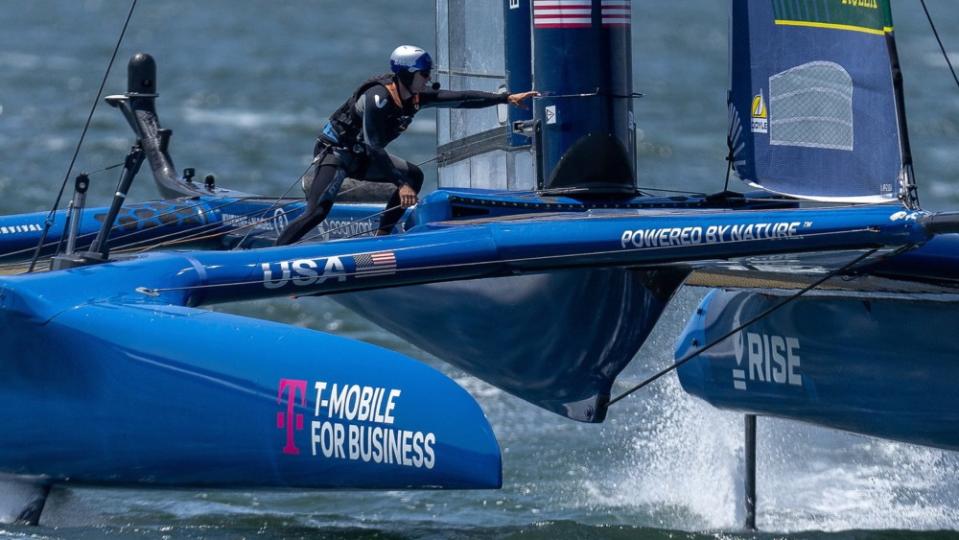
Click here to read the full article.
It’s high-risk, high-wire sailing at a technological level never before seen, one complemented by the unprecedented athleticism required of the six sailors who pilot the boat—a combination that has helped elevate the sport to a new level.
I spend 30 minutes on the F50, and it’s probably the most exciting half hour of my 20-plus years of writing about boats. I’ve been watching SailGP from afar, and while exciting, actually being on an F50 helmed by Spithill is a bucket-list experience. The two-time America’s Cup winner, world champion and ISAF Rolex World Sailor of the Year, treats me like a guest, even when it’s clear I’m burning into their very limited training time. In truth, I’m not much more than ballast in the port steering station, especially as the boat jibes and tacks and the team sprints across the netting to the other side.
Campbell Jones has raced on both the AC50 and F50 and says that the evolution is dramatic. “The AC50 didn’t have batteries to lower the foils, so it was seriously more labor intensive,” he says. “We had six sailors on the AC50s and four of them were grinders, turning handles.” The F50, he adds, “is way faster than the AC50, and we can do a lot more maneuvers.”
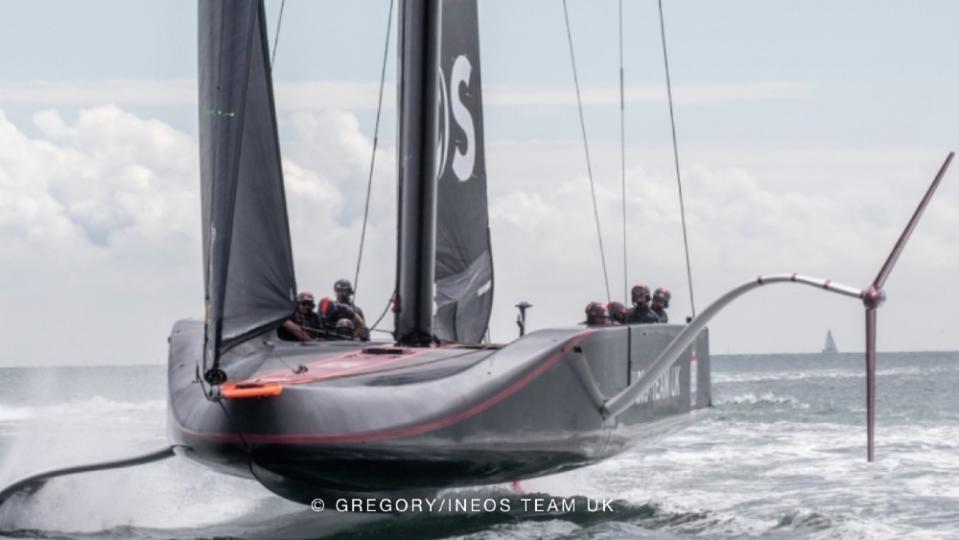
Standard on the last three America’s Cup fleets and tapped for the upcoming 2024 event, global ocean races and even Olympic windsurfers, foils are changing the rules of sailing. But they’re revolutionizing motorboats, too. In fact, foils can now be found on all sorts of watercraft, from e-foiling boards, jet skis and midsize motoryachts.
“The first foiling powerboat came from Italy and flew in 1906,” says Luca Rizzotti, founder of the Foiling Organization. Alexander Graham Bell’s HD-4 was the second successful attempt in 1918. “But it weighed 5.5 tons and was powered by two Liberty aircraft engines, so was not practical.”
Fast-forward a century with America’s Cup efforts to appeal to the masses with hyper-speed foilers. “Suddenly, the best technology, materials and minds were brought to bear to make these real—in record time,” says Bieker. “The breakthroughs came very fast.”
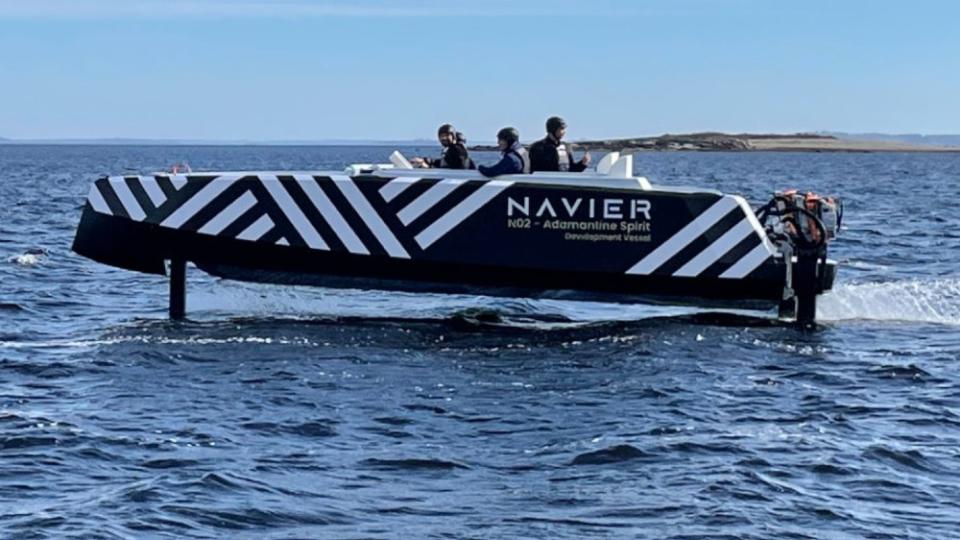
It’s revolutionizing motorboats, too, according to Bieker. His Anacortes, Wash., firm recently designed foils for the Navier N30, a nine-passenger electric powerboat that glides above the water on three carbon blades, each measuring seven feet five inches.
“The F50 and Navier foils use the same principles,” Bieker says. “The major difference is the F50 is manually controlled by the team, while the N30’s computer keeps it intrinsically stable above the water.”
Where the racing cat delivers raw power, the N30 is about passenger comfort and energy efficiency; think Tilt-a-Whirl versus magic carpet. The foils on the N30 use flaps that adjust 50 times per second, informed by sensors that measure wave conditions. The driver controls speed and steering, but the active foiling system does the rest.
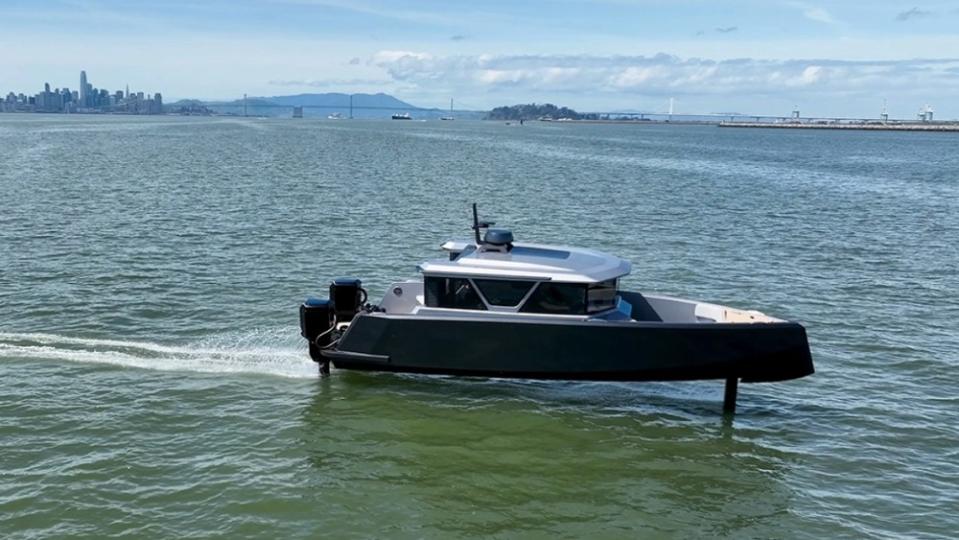
The N30 foils at 15 knots, has a range of 75 nautical miles at 22 knots, and tops out at 35 knots, while three modes (Cruise, Sport, and Economy) match conditions or pilot preference. Navier says the N30 can handle five-foot seas, though during our test ride in San Francisco Bay, we never experienced anything over two feet as we hovered above the chop—minus any sense of wave action—in the sanctuary of the pilothouse version, which will be delivered to its first buyer later this year.
Navier commissioned the respected Maine boatbuilder, Lyman Morse, to build its pilothouse version (it also has a center-console prototype, which was not as well finished). I rode on both during the SailGP finals and it felt so peaceful coasting over the waves, rather than punching through them, while watching the racing.
I was able to drive the pilothouse version a few days later, and the fit and finish was impressive, as was the intuitive response of the foils. The company talks about the similarities with flight, but this felt like boating, just above the waves. The bow and stern thrusters also allow exceptional docking, thanks to the electrical system’s instant response.

The zen-calm ride of the N30 nearly made me a true believer. But the Achilles’ heel for all this impressive tech is software, which became apparent aboard the Candela C-8. The 28-foot weekend cruiser is designed around its high-tech active foiling system—the wave-height sensors, gyroscope, and accelerometers that feed data 500 times per second to the flight controller, which manages the pitch, roll, and height of the foils.
On several occasions, the C-8 refused to foil or the foils retracted unexpectedly. A software glitch with the inverter was to blame—an issue resolved remotely by Candela’s headquarters in Stockholm, where 40 of the 200 employees are engineers. But software issues, such as those we experienced, could pose a real problem when boating during off-hours. On the plus side, software also controls safety functions, such as preventing overly aggressive maneuvering and ensuring a return home when the battery is depleted.
Once rebooted, the C-8 turned in a good performance. It’s intuitive to drive and, for an open design, remarkably quiet, with conversation possible even running at speed. I spent about an hour aboard the C-8 and recall flying above one stretch of water, with currents and tides running against each other, that would have battered a conventional boat.
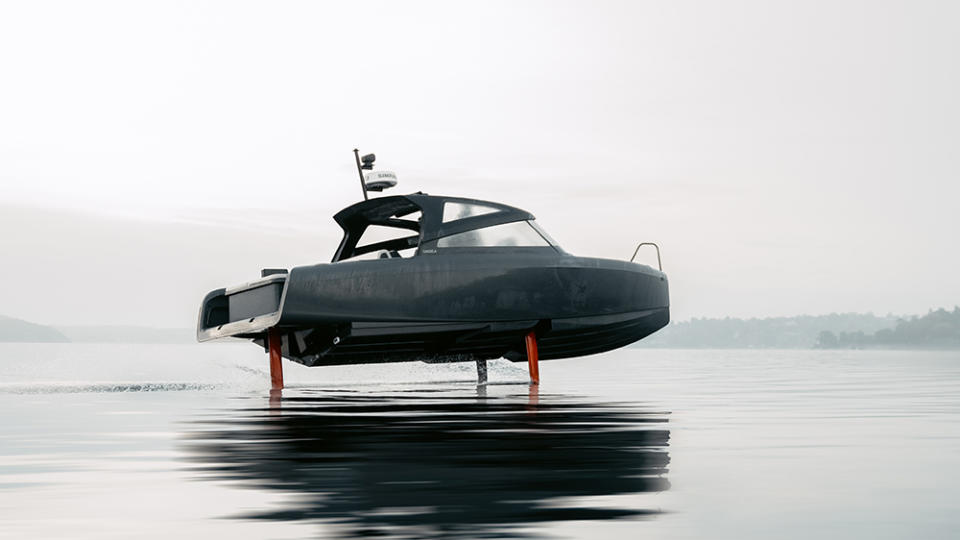
Candela is also making a center-console version of the C-8, which should do well in warm-water areas like Florida. New models will feature Polestar 2 EV batteries that increase range from 40 to 57 nautical miles and have 40-minute fast-charging potential.
Will foiling powerboats become mainstream?
Candela, the only builder with a production line, is convinced foiling is the future. High-volume production builders, and even a few superyacht yards, are also experimenting with the innovation. “Designing something that flies is a real technical challenge,” says Bieker. “But foiling uses a fifth of the energy of a similar-sized deep-V powerboat. Rising energy prices might be what tips the scale in their favor.”
Best of Robb Report

